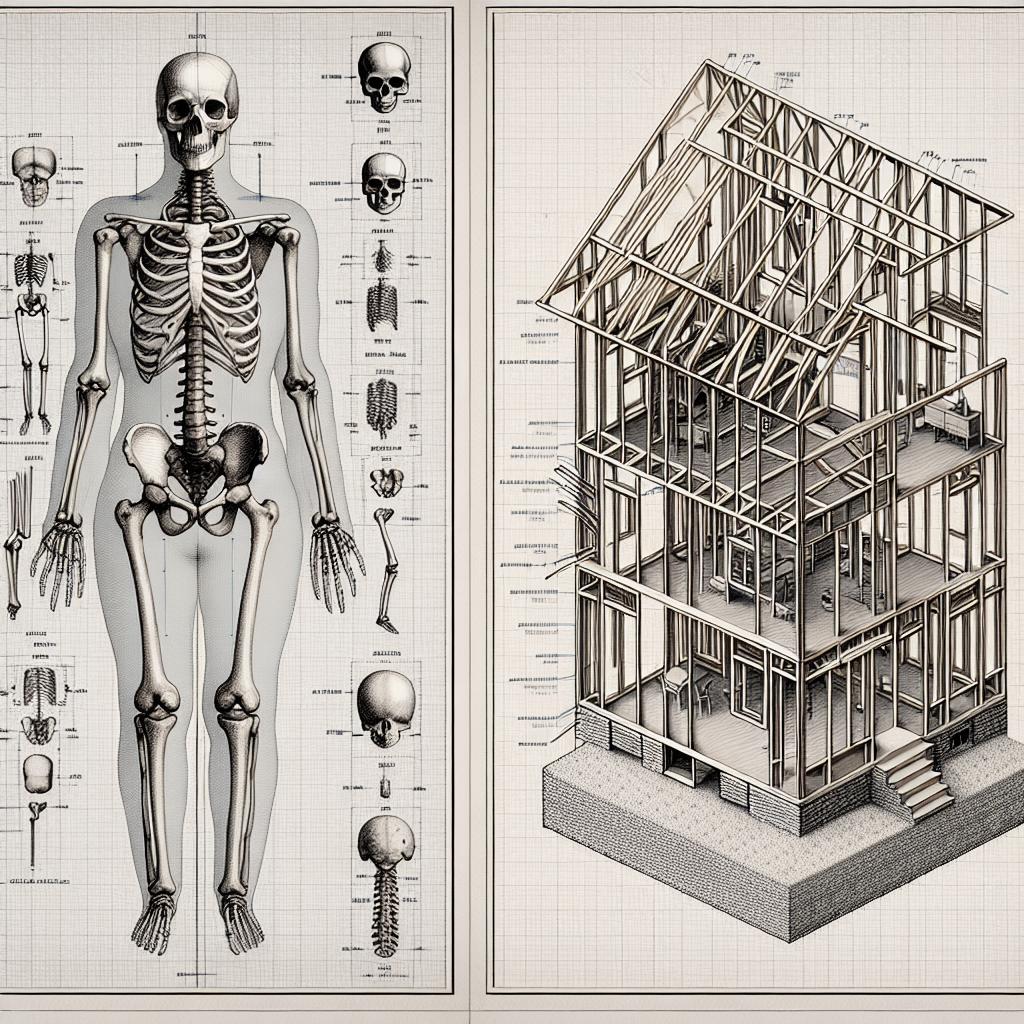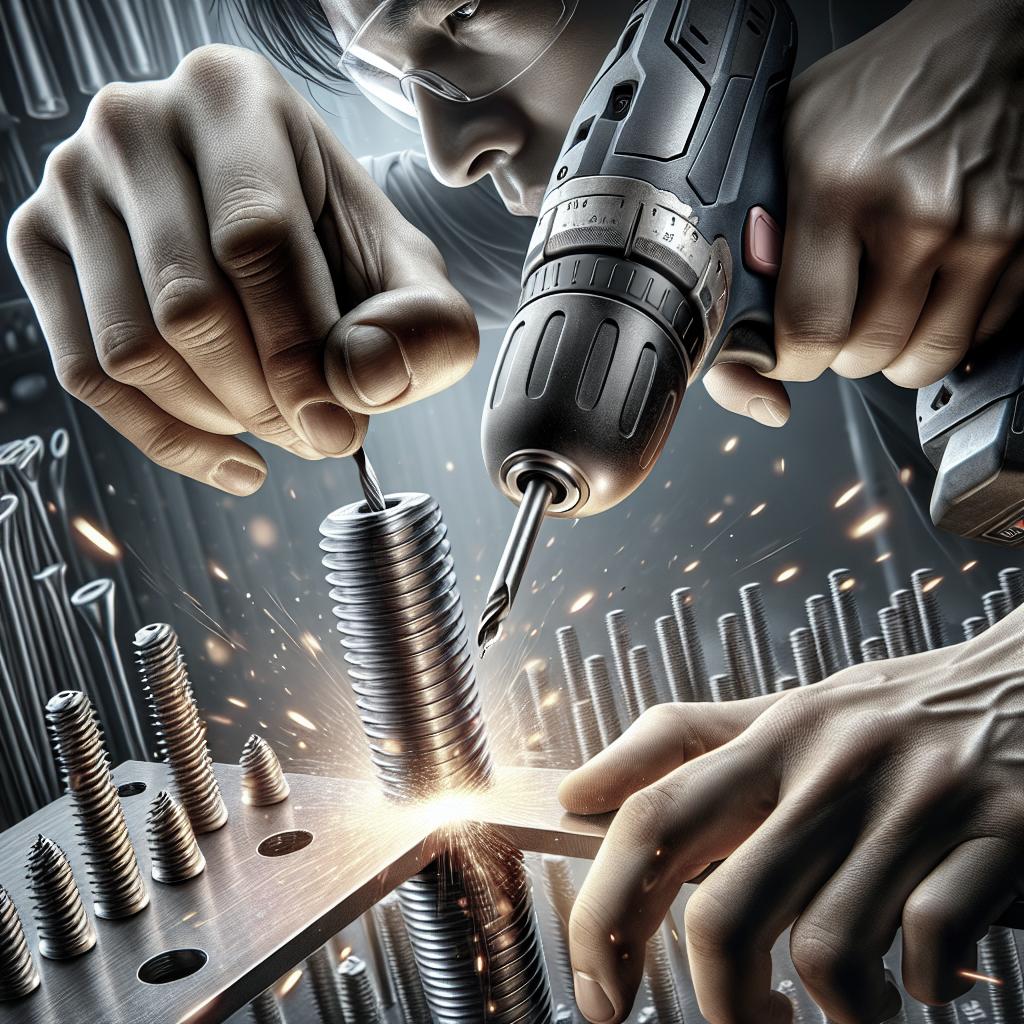“`html
Framed Structures
The human skeleton and the frame of a house serve parallel roles in their respective domains—each providing essential support and structure. Just as our bones are moments of stability and integral frameworks for bodily functions, the framework of a house is paramount for architectural integrity. Both require meticulous planning, precise execution, and regular maintenance to ensure optimal performance. In essence, the skeleton and the house frame act as architectural blueprints. In anatomy, bones like the femur, spine, and skull are foundational, akin to a house’s beams, studs, and joists. Neglecting these components in either case brings dire consequences, underscoring the need for robust construction and care.
Expression
The skeleton doesn’t just uphold structural necessities but also facilitates movement, much like how a house’s frame allows for various design elements and living spaces. It provides a canvas for muscles, tendons, and ligaments, enabling bodily expressions—be it a dance, a sprint, or a simple wave. Similarly, a house’s frame enables different architectural styles and interior arrangements, tailored to individual needs and aesthetic preferences. Moreover, both the skeleton and the house frame face adaptation pressures. Evolutionary changes have shaped skeletons to be more efficient and resilient, while modern building frames must meet ever-evolving architectural trends and regulatory standards. Flexibility and adaptability are crucial in maintaining the relevance and functionality of both systems.
Content
Internally, a house’s frame and a skeleton bear similar attributes in terms of support and protection. Bones protect vital organs—think of the ribcage encasing the heart and lungs. In parallel, house frames include walls and compartments that shield inhabitants from external elements, ensuring comfort and safety. Similarly, the composition of materials is key. In humans, bones are made from collagen and minerals, creating a lightweight yet strong structure. For houses, commonly used materials like timber, steel, and concrete offer diverse properties, optimizing the frame’s performance under various conditions. Both systems require a balance of strength and flexibility to meet their support and movement requirements effectively.
Challenges Faced by Small Housebuilders
Small housebuilders encounter numerous challenges, much like the human body faces stress and strain. Market competition, limited resources, and stringent regulations can impede progress and innovation. These constraints parallel how inadequate nutrition or physical stress can affect bone health, leading to conditions such as osteoporosis. Financial risk and logistical hurdles further complicate small builders’ efforts. Securing funding, managing costs, and balancing quality with affordability become significant pressure points. Similarly, maintaining bone health demands sufficient mineral intake, regular exercise, and preventive care against diseases.
The Problem with House-Type Portfolios
The traditional reliance on fixed house-type portfolios can stifle creativity and adaptability, mirroring how rigid, non-flexible bones can limit movement and functionality. Builders using outdated templates might find it challenging to meet modern demands, much like an outdated skeletal structure would struggle to support contemporary lifestyles. Homogeneous house-type portfolios can also diminish market appeal, both for buyers’ varying preferences and environmental adaptability. Modern families seek unique, customizable options, reflecting diverse needs and aesthetic tastes, just as individualized bone structures contribute to varied physical capabilities and appearances.
The Skeleton House Solution
An innovative “Skeleton House” concept offers a flexible, modular approach to construction, much like adaptable joints and bones in the body provide diverse movement capabilities. This solution entails creating a primary, robust frame that can be customized and expanded according to specific needs and preferences, akin to how the human body can grow and adapt. This method allows for efficient use of materials and labour, making it a viable solution for small builders. By focusing on a strong foundational framework, subsequent modifications and customizations become more manageable and cost-effective, mitigating many traditional challenges faced by housebuilders.
Benefits of the Skeleton House
The Skeleton House approach offers myriad benefits, notably in terms of flexibility and efficiency. Like a well-maintained skeleton that supports various physical feats, a robust house frame can accommodate numerous design iterations and functional modifications, enhancing its market appeal. Moreover, by emphasizing a strong underlying structure, builders can streamline the construction process, minimize waste, and reduce costs. The Skeleton House can cater to various aesthetic preferences and functional requirements, making it an excellent solution for both builders and buyers aiming for unique, resilient homes.
Customising the Skeleton House
The customization of the Skeleton House mirrors the body’s adaptive capacity. Just as bones grow and reshape in response to physical demands, house frames can be tailored and extended to suit evolving living requirements. Transforming a basic framework into a personalized home becomes a creative and fulfilling endeavour. Builders and homeowners can collaboratively explore design possibilities, much like how an individual can work with a physiotherapist to enhance mobility and bone health. This collaborative, iterative process ensures that the finished home is both functional and reflective of personal tastes and lifestyles, just as a healthy skeleton supports a balanced, active life.
Speed
Speed is a critical advantage of the Skeleton House, akin to how a well-functioning skeletal system enables swift, agile movements. Prefabricated components and modular designs can significantly reduce construction time, making it possible to complete projects faster without compromising quality or safety. This efficiency can be especially beneficial in markets where rapid housing solutions are required. Meeting quick turnarounds while maintaining high standards helps builders stay competitive and responsive to demand, creating a win-win scenario for both contractors and homeowners alike.
Winning on All Fronts – What’s Not to Like?
Adopting the Skeleton House approach can be likened to embracing a healthy lifestyle for better bone health. It presents a balanced, pragmatic solution to multiple challenges faced by modern housebuilders, offering flexibility, affordability, and efficiency without sacrificing quality. It’s a victorious strategy for meeting diverse, dynamic housing requirements. The process involves leveraging modern materials, streamlined designs, and collaborative customization, embodying the principles of resilience and adaptability. Like a robust skeletal system, a well-designed house frame ensures long-term structural integrity, market appeal, and homeowner satisfaction—proving that winning on all fronts is entirely achievable.
Want to Know More?
For those interested in exploring the intricacies of Skeleton Houses, a wealth of resources and expert insights await. Delving deeper into this innovative approach provides a comprehensive understanding of its benefits, processes, and future prospects. Seek out consultations, attend industry workshops, or explore case studies to witness the transformative impact of adopting flexible, efficient building frameworks. <
| Aspect | Skeleton | House Frame |
|---|---|---|
| Framed Structures | Provides structural support and stability | Offers architectural integrity |
| Expression | Facilitates physical movement | Enables different design elements |
| Content | Protects vital organs | Shields inhabitants from external elements |
| Challenges Faced | Nutrition and physical stress for bones | Market competition and regulations |
| House-Type Portfolios | Rigid structure limits functionality | Fixed templates stifle creativity |
| Skeleton House Solution | Adaptable joints and bones | Flexible, modular approach |
| Benefits | Supports various physical feats | Offers flexibility and efficiency |
| Customisation | Bones grow and reshape | Frames tailored to suit needs |
| Speed | Swift, agile movements | Reduces construction time |
| Winning on All Fronts | Embraces health for resilience | Balanced, pragmatic construction solution |
| Want to Know More? | Research, expert insights, and resources | Consultations, workshops, and case studies |
“`

